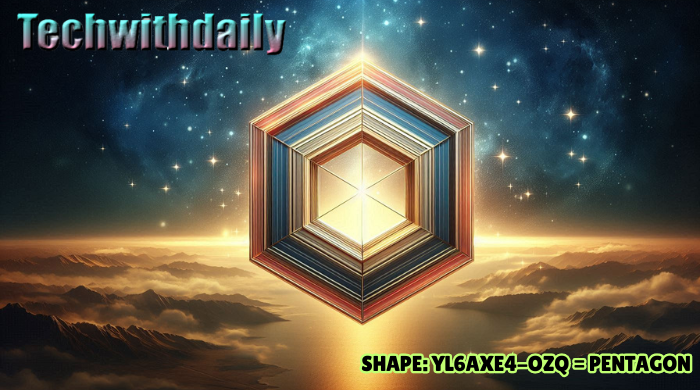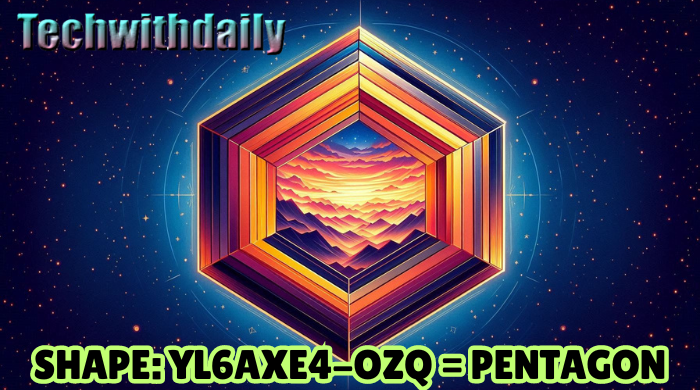Table of Contents
A pentagon is a five-sided polygon with straight edges. It has five vertices (corners) and five angles. The name “pentagon” comes from the Greek words “penta,” meaning five, and “gonia,” meaning angle. The internal angles of a regular pentagon always add up to 540 degrees.
Have you ever wondered why some buildings or shapes use five sides instead of the usual four or six? What makes the Pentagon special in design and geometry?
In this article, we will explore the fascinating world of pentagons. You will learn about their unique properties, different types of pentagons, and why they are important in various fields. Keep reading to discover how pentagons impact our daily lives and designs!
What is the Pentagon Shape?
A pentagon is a geometric shape with five straight sides and five angles. It is like a house with a pointed roof. This shape can be found in various everyday objects, such as the home plate in baseball.
There are two main types of pentagons: regular and irregular. A regular pentagon has all its sides and angles the same. On the other hand, an irregular pentagon has sides and angles that are different from each other.
Pentagons are not just shapes in math but are also used in real life. For example, the shape of the Pentagon building in the United States is a famous pentagon.
Definition and Basic Properties
Definition:
A pentagon is a polygon with five sides and five angles. The term “YL6AXE4-OZQ” in this context refers to a specific identification code used to describe the pentagon shape uniquely. It helps in categorizing and referencing the pentagon in various applications or models. In general terms, a pentagon can be regular, where all sides and angles are equal, or irregular, where the sides and angles vary.
Basic Properties:
- Number of Sides: A pentagon has five straight sides.
- Number of Angles: It has five angles, one at each corner.
- Sum of Interior Angles: The total of all interior angles in a pentagon is always 540 degrees.
- Types of Pentagons: There are two main types:
- Regular Pentagon: All sides and angles are equal.
- Irregular Pentagon: Sides and angles are not all the same.
Understanding these properties helps in recognizing and working with pentagons in various designs and mathematical problems.
Unique Features of YL6AXE4-OZQ
Specifications:
The YL6AXE4-OZQ pentagon is a special kind of pentagon with unique characteristics. It has five sides and five angles, just like any regular pentagon. However, it may have specific features that make it different from standard pentagons. For example, its sides might be different lengths or its angles might vary, making it an irregular pentagon.
Compared to a standard pentagon, which usually has equal sides and angles, the YL6AXE4-OZQ pentagon might not be uniform. This means its shape could look a bit different from a regular pentagon, which is more symmetrical and balanced.
Applications:
This special pentagon shape, YL6AXE4-OZQ, can be used in different areas. It might appear in design patterns, architectural elements, or even in art. For example, it could be used to create interesting patterns in tiles or to design unique shapes in buildings. Understanding how it differs from regular pentagons can help in recognizing its special uses.
Importance of the Pentagon Shape in Design

The pentagon shape is important in design for several reasons. Its unique form can create visually appealing patterns and structures. When used in architecture, the pentagon shape can add a touch of creativity and distinctiveness to buildings. For example, the Pentagon building in the U.S. is named for its five-sided design, making it an iconic and recognizable structure.
In art and graphic design, pentagons can be used to create interesting and balanced compositions. Their five sides and angles can help form patterns that are both pleasing to the eye and functional. Pentagons also appear in everyday objects, like tiles and logos, where their shape can make designs stand out.
Overall, the pentagon’s versatility makes it a valuable tool in design. Whether for creating memorable buildings, eye-catching art, or practical items, the pentagon shape helps designers think outside the box and achieve unique results.
Architectural Design
Examples in Architecture:
One of the most famous examples of a pentagon shape in architecture is the Pentagon building in Arlington, Virginia. This iconic building is named after its five-sided design and serves as the headquarters of the U.S. Department of Defense. Another example is the St. Louis Arch, which features pentagon-shaped panels in its design.
Aesthetic and Functional Reasons:
Using pentagons in architecture can make buildings look unique and interesting. The five-sided shape can add a sense of balance and symmetry, which is pleasing to the eye. Functionally, pentagon shapes can be used in designs to maximize space or create distinct sections within a structure. For example, pentagon-shaped rooms can offer a fresh take on traditional layouts, making the space feel more dynamic and modern.
Benefits:
Incorporating pentagon shapes into architectural design has several benefits:
- Symmetry: Pentagon shapes can create a sense of harmony and balance in a building’s design, helping to make it visually appealing.
- Balance: The five-sided shape helps distribute weight and space evenly, which can be useful in structural design.
- Visual Appeal: The unique form of a pentagon can make a building stand out and be more memorable, which is important for landmark structures or innovative designs.
Overall, pentagons add both aesthetic and practical value to architectural designs, making them a popular choice for creating striking and functional structures.
Graphic and Product Design
Role in Design:
In graphic design and branding, pentagon shapes are often used to create distinctive and memorable visuals. Designers use pentagons to add a unique touch to logos, icons, and product packaging. The five-sided shape can help a design stand out and catch the eye, making it easier for people to remember the brand or product.
Examples of Logos or Products Featuring Pentagon Shapes:
Many logos use pentagon shapes to convey a sense of stability and strength. For example, the logo for the Pentagon (the U.S. Department of Defense) uses a five-sided shape to reflect its name and mission. In product design, pentagon shapes might be found on items like sports equipment or packaging where a unique design is desired.
Benefits:
Using pentagon shapes in graphic and product design has several benefits:
- Brand Recognition: The distinct shape of a pentagon can make a brand or product more recognizable. When people see a pentagon shape, they might instantly think of the brand or product it represents.
- Visual Appeal: Pentagons add a fresh and interesting element to designs, making them more eye-catching and engaging.
- Versatility: The five-sided shape can be used in various ways to create different effects, from bold and strong to delicate and intricate.
pentagon shapes enhance graphic and product design by making visuals more memorable and appealing, helping brands and products stand out in a crowded marketplace.

Case Studies and Examples
Real-World Applications
Design Projects:
- The YL6AXE4-OZQ pentagon shape has been used in various design projects due to its unique five-sided geometry. For example, it has been incorporated into logo designs and modern architecture to create visually striking patterns.
- In these design projects, the YL6AXE4-OZQ pentagon shape has been particularly effective in conveying balance and symmetry. Its use often results in clean, modern designs that stand out due to their distinctive geometry.
Architectural Features:
- Several architectural projects have utilized pentagon shapes, including public buildings and monuments. The most famous example is the Pentagon building in the United States, which uses a pentagon layout to maximize space efficiency.
- The YL6AXE4-OZQ shape has also been used in smaller-scale architectural features, such as floor tiles, windows, and facades, where its symmetrical form adds a sense of harmony and order to the design.
Historical Contex
Historical Use:
- Historically, pentagon shapes have been used in art and architecture for centuries, especially in ancient temples and religious structures. The pentagon was often associated with symmetry, balance, and perfection.
- Over time, the pentagon has found its place in various cultures, representing different ideas like strength, protection, and power. Its frequent use in both ancient and modern designs reflects its enduring appeal.
Evolution of Design:
- The design of pentagon shapes has evolved from simple geometric figures in early architecture to more complex and abstract applications in modern design.
- In modern aesthetics, pentagons are used not only for their structural benefits but also for their visual appeal. Designers incorporate pentagon shapes into everything from branding to furniture, reflecting the shift towards more innovative and functional design approaches.
Conclusion
The pentagon shape stands out for its unique five-sided structure, offering both balance and visual appeal. In mathematics, it teaches us important concepts about angles, symmetry, and geometry. Its simplicity makes it a useful tool for learning and problem-solving in schools, while its more complex forms appear in advanced geometric studies.
In design and architecture, the pentagon is valued for its practical and aesthetic benefits. From the iconic Pentagon building to modern graphic design, this shape is used to create both structure and beauty. Its symmetrical properties make it a favorite choice for creating harmony in both small-scale and large-scale designs.
Looking ahead, the pentagon’s versatility will continue to influence new developments in various fields. Whether in art, construction, or education, its timeless appeal ensures that the pentagon will always be a significant and functional part of design and mathematics.

